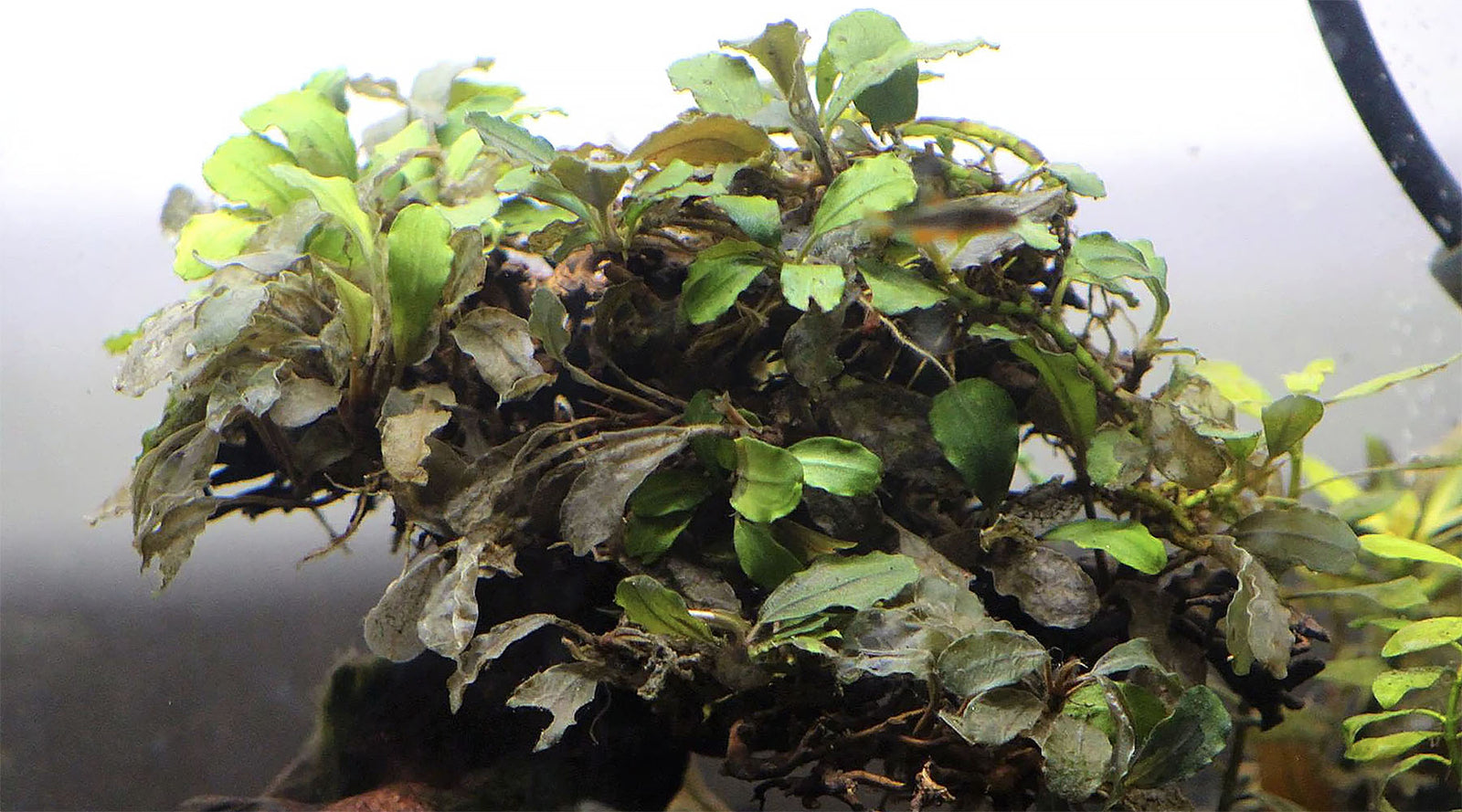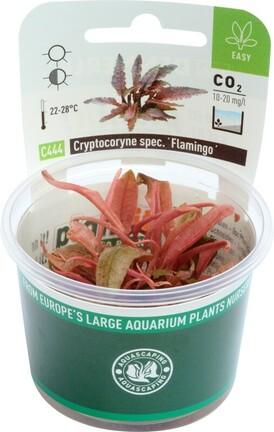
Why do aquatic plants melt?
Melting in this scenario refers to aquatic plant losing some or all of its leaves; this usually happens to older leaves first, which lose color and become transparent before disintegrating.
Melting occurs due to adaptation changes in plant cells due to new environmental variables; the plant channels energy into new growth and forming new proteins optimized for the new environment, sacrificing and scavenging nutrients from older leaves and discarding old DNA that were not optimized for the current environment. Sacrificing older tissue occurs because the plant cannot meet its immediate metabolic needs and prioritized channeling energy into new growth optimized.
One of the biggest changes in emergent vs submerged growth is diminished access to the gases CO2 (Carbon dioxide) and O2 (Oxygen). Due to poorer gaseous exchange in water, sudden submergence of emersed grown aquatic plant into water cuts off their access to CO2 and O2, and this places tremendous stress on the plants. The plants need to quickly compensate for this or die, and thus channel all energy to new submerged adapted growth while sacrificing energy required to sustain older growth. Many species would also try to breach the water line and access air again, by elongating their internodal distance. To this end, providing CO2 enriched water helps transition stress tremendously.
Melting can also occur due to long term poor growth conditions, which result in delicate plants that melt easily when pushed over the edge by small changes in environmental conditions. This usually happens in tanks where nutrient dosing is overly lean across a long period of time, resulting in plants that look alright on the outside, but are actually very delicate – in this state, any significant flux in the tank can then tip it over and induce melting.
Is melting normal and unavoidable in new tanks?
Contrary to popular belief, melting is not normal or unavoidable. However, it is extremely common, especially in new tanks or tanks with no CO2 injection. Some species such as Cryptocoryne species as well as delicate plantlets from tissue culture are especially prone to melting when adapting to new tanks, however, even this can be minimized or avoided if one knows what variables to control.
Principally, in favorable growth conditions, there is no need for a plant to sacrifice old tissue to channel energy to new growth. If the plant can get what it needs directly from the environment to both grow new leaves as well as sustain the older ones, there would be less impetus to melt. The same emersed grown leaves of many species (Cryptocoryne, Bucephalandra) can transform directly into submerged form leaves. In good conditions, many plants can retain their submerged form leaves for many months underwater, even though they perform at a less effective capacity from new grown, fully submerged adapted leaves.
Tissue culture plants are very value for money as you get many plants out of a single cup – that is if you manage to grow out all the small plantlets. They are more delicate than full grown plants and are especially vulnerable to ammonia in immature aquasoils or soils with a lot of detritus. Avoiding transition stress allows one to fully exploit their value.
Back in 2018, Cryptocoryne flamingo became more readily available in Singapore in Dennerle tissue culture cups. With good tank conditions, it was possible to grow out 15+ plants from a single $30 cup.
Avoiding plant melt, easing transition stress
Melting occurs due to plant adaptation changes to new environmental variables. To avoid melting involves a two pronged approach of reducing plant stress and giving the plant good growth parameters;
1. Get healthy plants to start with; plants with more stored energy have more energy to manage the transition process. Weak plants and picky species are more prone to melting. Long transport and poor packing also affects plant health, so who you buy plants from is critical.
2. Get high O2 & CO2 levels. The the main stress factor in transitioning plants from emersed to submerged is that they are suddenly in an environment that is much harder for the plants to attain CO2/O2 as gaseous exchange is much poorer underwater. These elements are at the heart of a plant’s metabolic processes and Carbon makes up more than 50% of a plant’s dry mass, more than any other “fertilizer”.
3. Plant in a matured, cycled tank, matured soil. This is especially so for users that use ammonia rich aquasoils. Ammonia is damaging to plants in high amounts. Cycling tank before hand allows volatile organic substances to settle and is less stressful for plants. Have you failed to grow utricularia gramminifolia from tissue culture? It is most certainly because this step was skipped. UG is an easy plant otherwise.
4. Clear away organic detritus from substrate for rooted plants. Too much organic matter rots delicate plants like those from tissue culture. It also causes algae issues in the tank as a whole.
5. Use lower temperatures for your tank. Lowering the temperature slows down plant metabolism, and hence demand for CO2/O2/nutrients. 22/23 degree celsius works well.
6. Separate large bunches of plants and plant in smaller groups. This allows better water flow around individual plants, less over crowding and better access to light.
7. If you are not already dosing a wide spectrum liquid fertilizer into the water column, you should. New plants have undeveloped root systems and cannot feed from the substrate. But they can still draw nutrients directly out of the water column. Folks that hold off dosing in new tanks are not helping their plants acclimatize. Dosing should be done from day 1 that plants are introduced into the tank.

What if I have a low tech (non CO2 injected) tank ?
Without CO2 injection, one large stress factor (access to CO2) cannot be mitigated. That is why melting plants are so common in non CO2 injected tanks. However, the other variables still apply. Getting submerged grown, robust plants will help. Choosing species that are hardy and suited for non CO2 injected tanks improve success rates tremendously (Java fern, crypst, anubias). Most low tech tanks have lower light levels overall, you might want to choose open spots that are not shaded to plant sensitive species so that they receive more light. Flow is still important – good circulation in a tank improves gaseous exchange and bring dissolved gases to plants. If you are not dosing the water column, dosing an all round fertilizer is impactful; freshly planted plants can draw nutrients through their leaves directly, even if their root zone has not developed yet to feed from the substrate.
Transition also generally takes quite some time in non CO2 injected tanks. So patience is necessary and resist the urge to keep moving plants around, let plants settle in and acclimatize to their positions in the tank.
I have a tank that was running perfectly fine and suddenly I have some plants melting, what can cause this. I did not change my light/dosing/CO2 etc?
This usually happens in tanks that adopt very lean dosing methods over a long period of time. Long term underfed plants can look outwardly intact, but are actually very delicate. Once there is some minor shock to the system, melting occurs. Often in such tanks there are subtle signs of long term nutrient deficiencies (along with minor, but persistent algae issues). Intermittent melting in an other wise stable tank, could be a hint that dosing methods are not robust enough.
This is more prevalent in approaches where the tank is heavily dependent on substrate feeding of the plants. As the substrate depletes over time, plants that have been dependent on the root substrate grow less and less robust over time. If your tank is dependent on substrate feeding to grow plants, it is important to enrich the substrate as time goes by. Many aquasoil substrates deplete much faster than people realize, with the majority of the nutrients being depleted in the first few months of submergence.
What do I do if I already have melting plants?
Remove/siphon away dead/dying tissue; this removes ammonia/pollutants from the tank and gives existing leaves more space to grow. More water changes to remove ammonia and dead and dying leaves reduce algae trigger; better water quality always help plants settle in.
In matured tanks, cutting and replanting new top growth and discarding old growth, and making sure dosing levels are adequate for long term healthy growth is important.
In new tanks, paying attention to biological maturity of the tank; doing more water changes and ensuring low organic waste levels helps. Dial in parameters to promote growth (check CO2, nutrient levels).
Head here for video on how to water change.
Here here to read the details on how to cycle a tank.
Head here to learn about The 2Hr Aquarist APT Fertilizers.

